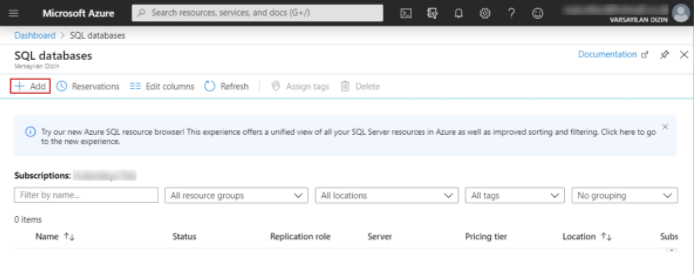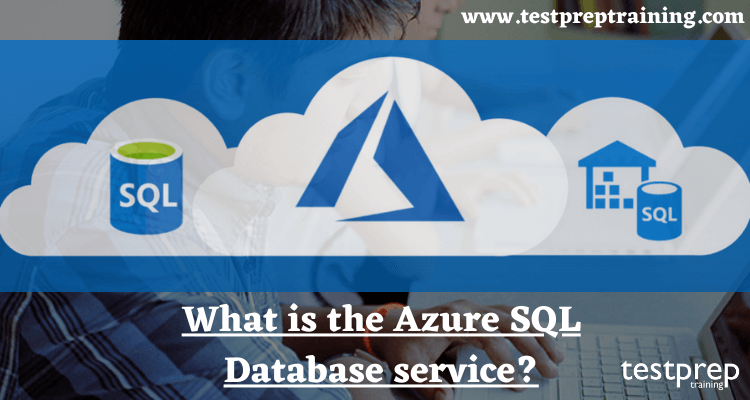Since the cloud computing has accessed in our lives, we have begun to obtain the ability to access several services at unimaginable speeds through the cloud. Storages, servers, networking, databases, and software can be calculated as an instance of these services. The capability to instantly access these sources continues to straight influence productivity positively and it appears that it will proceed to do so with more expeditions than today. In this way, we can improve our adaptability in challenging market situations. In addition, efficient cost management advantage is another primary advantage of cloud computing. Purchasing new hardware and software increases the expense of the institutions. On the other hand, organizations require to engage IT experts to maintain these new infrastructures. Nevertheless, cloud computing benefits to decrease these expense items. So, in this particular article, we are going to discuss the Azure SQL Database service. Let us get started:
Introduction to Azure SQL Database service
The Azure SQL Database is a cloud computing database service that is administered by Microsoft Azure Platform which serves to host and practice a relational SQL database in cloud without needing any software or hardware installation. It is a completely managed relational database software as a service. It is excellently satisfied with cloud-based solutions. If you’re developing a cloud-native serverless suspension, then Azure SQL Database is apparently the best choice for you.
Azure SQL Database is always operating on the newest version of the SQL Server database engine and covered OS with 99.99% availability. Further, PaaS abilities that are developed into the Azure SQL Database allow one to concentrate on the domain-specific database administration and optimization exercises that are important for their business.
Also, it gives several excellent features to its users such as:
- Long-term backup retention: It allows us to take backups for up to 10 years.
- Geo-replication: It creates readable secondary databases in various data center locations.
- Business continuity
- High-availability
- Scaling database resources: This feature is the powerful feature that gives scaling the database resources either up or down.
- Automated backups
- Automatic tuning: It is an artificial intelligence-based performance tuning option which helps in fixing the performance problems automatically.
Deployment Options types for the Database:
- Single Database: It represents a controlled isolated database. We build a database in the Azure SQL with its own collection of resources and it is governed by sever.
- Elastics Pool: An Azure SQL Elastics pool permits us to designate a shared set of computing resources to the group of Azure SQL Database. Elastics Pools are well arranged for a great number of databases with appropriate utilization patterns.
- Managed Instance: This is a deployment choice of Azure SQL giving 100% compatibility with the current SQL server on-premises.
Now, let us discuss the benefits of using the Azure SQL Database service.
Advantages of using Azure SQL
- The Azure SQL is simple to add to the solution with no needed manual maintenance. A few clicks and Azure SQL is up and operating in minutes.
- Also, it never goes down unless the whole Azure cloud is broken.
- Azure SQL is wholly managed and forever up to date with the current releases and fixes. You don’t require to do anything.
- Hyperscale storage and Serverless computation options scale resources on-demand automatically, so one can conentrate on making new applications without thinking about resource management or storage size.
Creating an Azure SQL Database
In this particular section, we will discuss creating a SQL Database in Azure, we will first require an Azure user account. Microsoft permits forming an Azure free account with credit so if you don’t hold an Azure account you can practice this option. Further, after logging into the Azure, we will snap the Go to the Portal link and sail to the Azure Management Portal.

- Next, we will draft the SQL keyword into the search textbox and then snap the SQL databases option.
- To make a new database, we will now the Add or Create SQL database on the SQL databases page.

- The resource group accommodates to group the relevant Azure services below a logical arrangement. A website deployment can demand different varieties of resources such as database, IIS, servers, etc. We can arrange these services in the corresponding resource group which seems like the envelope in the file system.
- On the Create SQL Database sheet, we can pick an existing resource collection or we can build a new one.
- Click create new button to make a new resource group
- Specify a title for the new resource collection
- Snap OK to make this resource group
In the Database Details part, we will give a title to this database and this title must complete naming policies.
- The database title should not contain any specific characters. For example, DemoDB== or Demo??DB can not be utilized as a database title.
- Database title must be at most 128 characters.
- Database title must not include any reserved keywords. For instance, we cannot provide the Azure name to any database.
- We should not utilize the title of an existing database on the relavant server 2nd time.
Finally, we will provide the SQLShackDemoDB name to the database and it entertains all policies.
After providing a fitting name to the database, we will generate a new server. When we snap the Create New link, the New server page emerges on the right bottom of the page. In this screen, we will determine the server name, admin login password.
Differences Between Azure SQL Database And SQL Server
Let us now differentiate between Azure SQL Database And SQL Server.
Backup and Restore
- Standard database backup and restore observations aren’t sustained.
- In Azure, SQL Backups are scheduled and start in a few minutes automatically.
- In Azure, there is no extra cost for backup storage until it reaches past 200% of the provisioned database storage.
Recovery Model
- The default recovery pattern of an Azure SQL database is Complete and it can’t be adjusted to any additional recovery model as in on-premises recovery figures.
SQL Server Agent
- Azure SQL Server doesn’t hold SQL Server Agent, which is utilized to list jobs and send failure/success notifications.
Mirroring
- We can’t perform mirroring among two Azure SQL databases however we can configure it as a mirror server.
- Also, we can set up a regular secondary for an Azure SQL database, which is more salutary than mirroring.
Table Partitioning
- Table partitioning practicing a partition plan and partition function is enabled in the Azure SQL Database. All partitions must be built on an initial filegroup because of the PaaS nature of the SQL database.
Replication
- Conventional replication techniques, such as snapshot, transactional, and merge replication, can’t be done between two Azure SQL databases. However, it can be a subscriber to an on-premise or Azure VM SQL Server.
Let us go further by discussing the models.
Purchasing models
SQL Database provides the purchasing models such as:
- The vCore-based purchasing pattern lets you pick the number of vCores, the value of memory, and the speed and amount of storage. The vCore-based purchasing model also provides you to utilize Azure Hybrid Benefit for SQL Server to achieve cost savings.
- The DTU-based purchasing model allows a mixture of computing, memory, and I/O sources in three service layers, to sustain light to huge database workloads. Compute sizes within every tier give a diverse blend of these resources, to which you can supplement extra storage resources.
- The serverless model scales compute automatically based on workload request, and bills for the number of compute used per second. Also, the serverless compute tier automatically pauses databases while inactive periods when storage is charged, and resume databases when activity responds automatically.
Advance threat protection
Azure Defender for SQL is a consolidated package for excellent SQL security abilities. It incorporates functionality for contriving your database vulnerabilities and recognizing anomalous transactions that might present a threat to the database. It delivers a separate place for enabling and managing these abilities.
- Vulnerability assessment- This service can track, discover, and help you to remediate potential database vulnerabilities. Also, it gives visibility into the security state, and incorporates actionable steps to solve security issues, and improve the database fortifications.
- Threat detection:This detects anomalous activities that show unusual and harmful attempts to access or break your database. It constantly monitors the database for suspicious, and give immediate security alerts on potential vulnerabilities, SQL injection attacks, and anomalous database access patterns. Threat detection alerts provide details of the suspicious activity, and recommend action on how to investigate and mitigate the threat.
To Conclude!
Azure SQL Database gives a variety of built-in security and compliance features to accommodate your application to meet security and compliance necessities. We at Testpreptraining hope that this article helped you! Stay safe and keep practicing!

